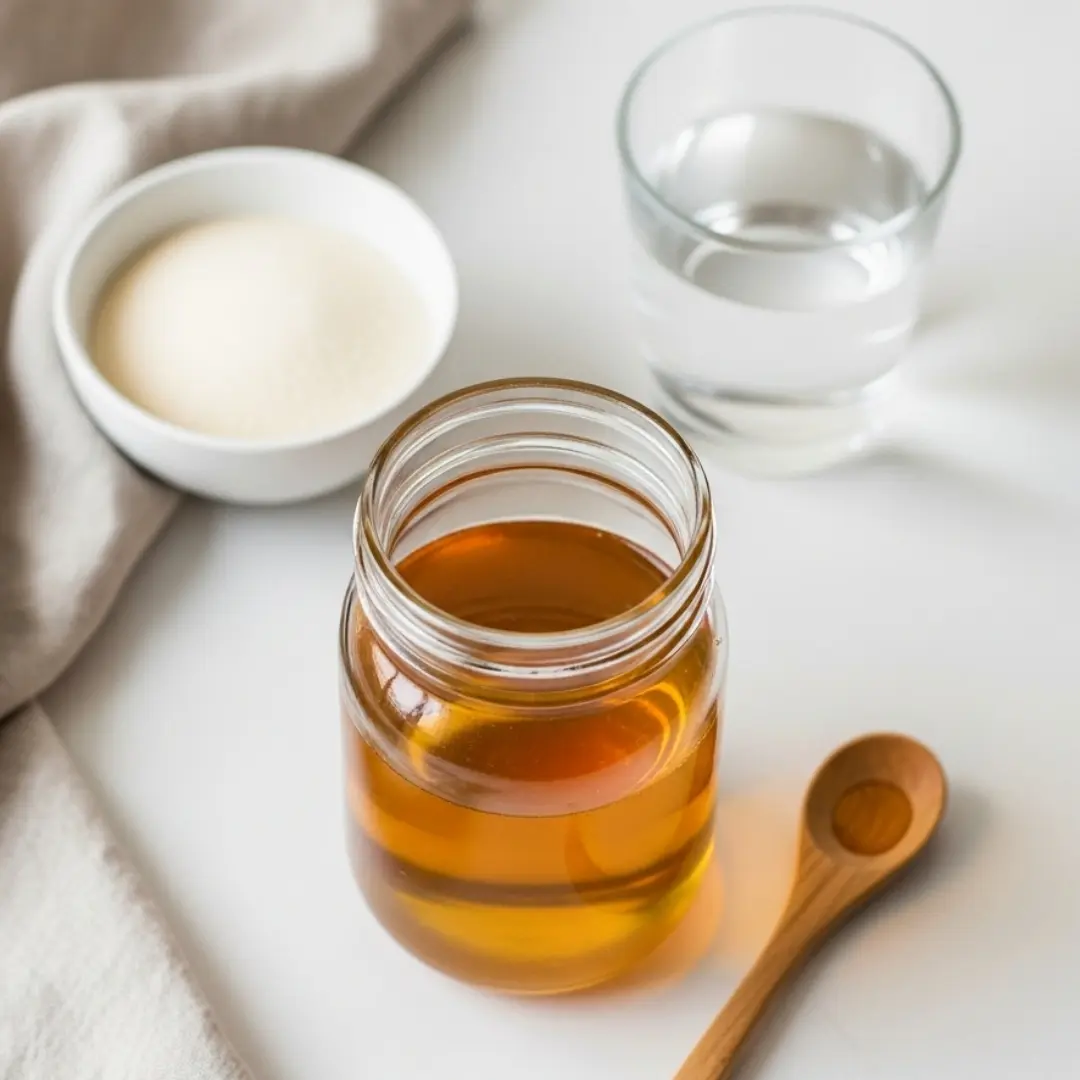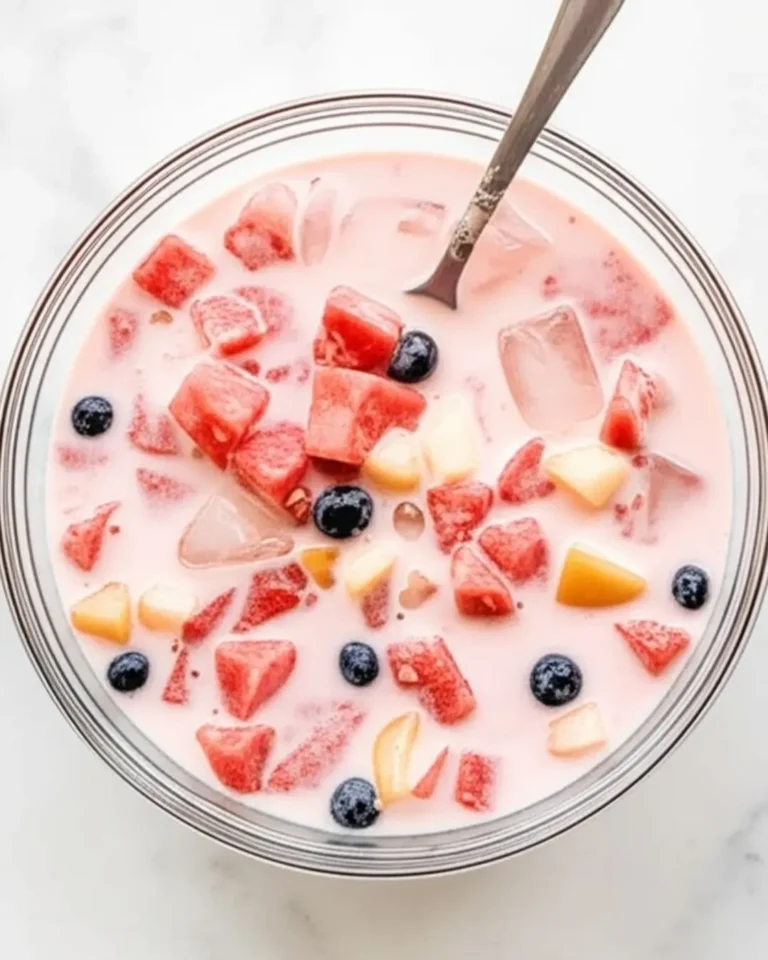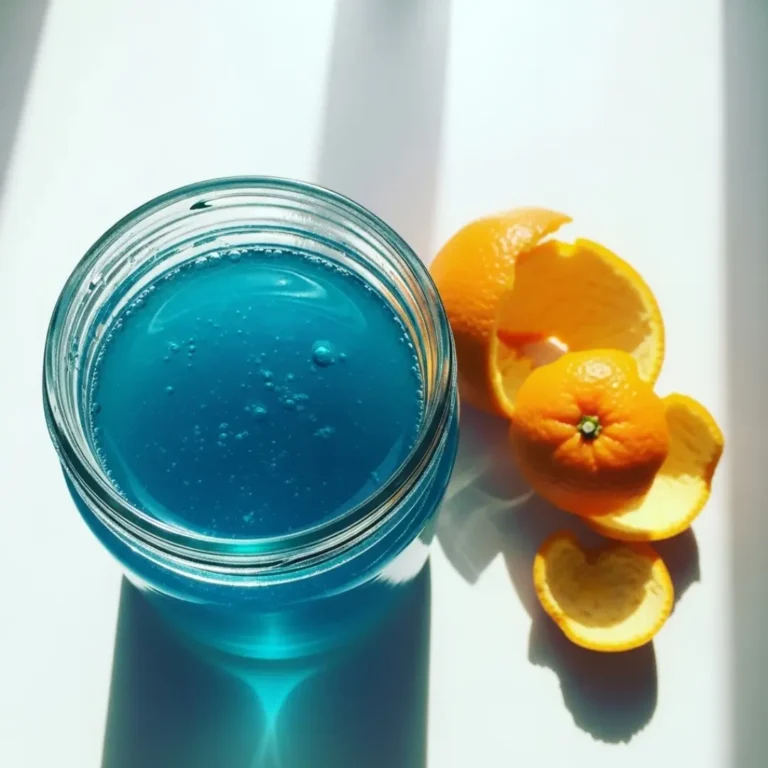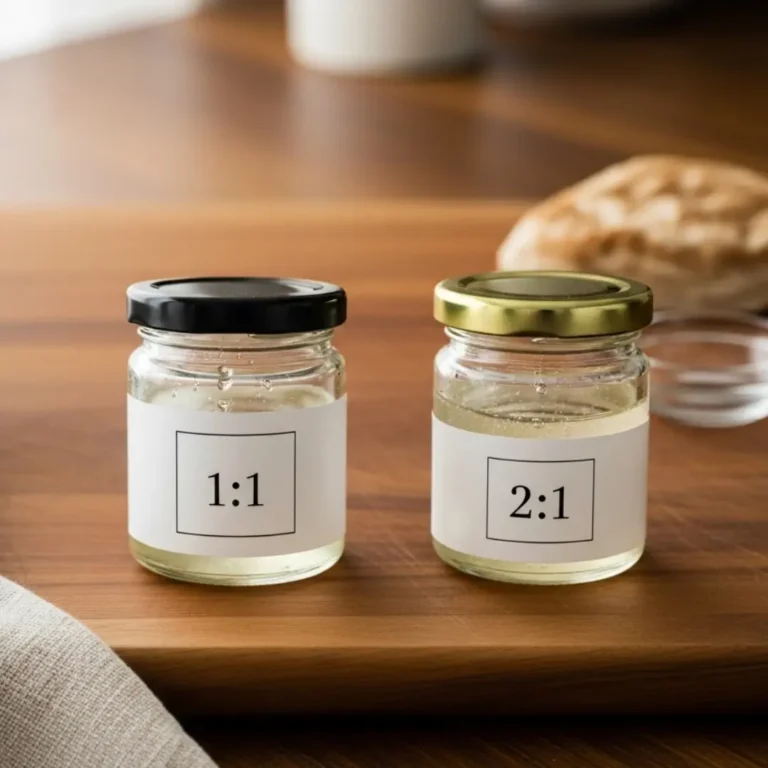What Is Simple Syrup? (Definition, Uses & Bartender Tips)
Ever stirred granulated sugar into an iced tea or cocktail, only to find it sinking straight to the bottom? That’s exactly the problem simple syrup was born to solve. It’s one of those quiet kitchen staples—humble, unassuming, but once you start using it, there’s no going back.
Definition and Uses
Simple syrup is exactly what it sounds like: a mixture of sugar and water. That’s it. But don’t let its simplicity fool you—it’s the golden ticket to smooth, even sweetness in everything from cocktails to lemonade to homemade sorbet.
Think of it like this: If sugar were a guest at the party, simple syrup is the friend who brings them in and makes sure they mingle. It dissolves effortlessly into both hot and cold liquids, eliminating the gritty mess that straight sugar sometimes leaves behind.
What is the formula for simple syrup?
The classic formula is 1 part granulated sugar to 1 part water (1:1). It’s the most versatile base for both sweet and savory recipes.
Why Bartenders Love It
Ask any bartender—or home mixologist who’s made more than one good drink—and they’ll probably wax poetic about simple syrup. It’s not just about sweetness; it’s about control. It lets you build flavor with precision.
Whether it’s a mojito, iced matcha, or lavender lemonade, simple syrup is the go-to way to evenly sweeten without throwing off texture or flavor. It’s also wildly customizable, which we’ll get into in the “Flavor Variations” section.
Simple syrup is to drinks what a great foundation is to a house: invisible, but absolutely essential.
Simple Syrup Recipe Ingredients at a Glance:
- 1 cup granulated sugar
- 1 cup water
- Ready in 5 minutes
How to Make Simple Syrup (Step-by-Step + Ratios Explained)
There’s something soothing about making simple syrup at home. It’s quiet work—just sugar and water—but it feels a little like magic every time. You stir, it dissolves, and suddenly you’ve got a liquid sweetener ready to brighten up anything from iced coffee to summer spritzers.
Basic Ratio (1:1)
This is the most common method, and honestly, the one I reach for nine times out of ten.
- 1 cup sugar
- 1 cup water
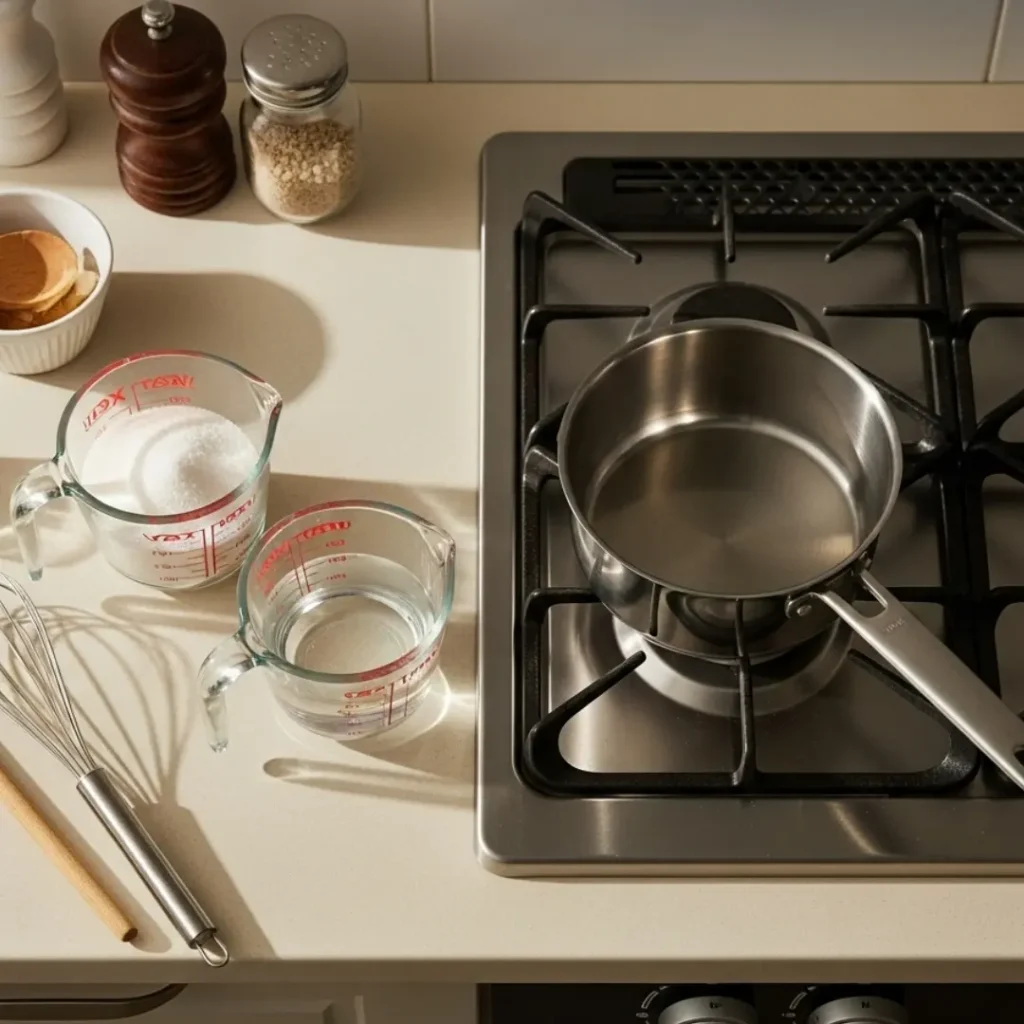
Combine them in a small saucepan and warm gently over medium heat, stirring until the sugar disappears. Don’t boil it—you’re not making candy. You’re just giving sugar a cozy bath until it melts into the water.
Let it cool completely before bottling, and you’ve got a smooth, balanced syrup that plays nicely with nearly any drink.
Should simple syrup be 1:1 or 2:1?
It depends on the purpose. 1:1 is standard for most drinks; 2:1 (see below) creates a thicker syrup with longer shelf life and stronger sweetness.
If you’re curious about the pros and cons of each ratio, here’s a breakdown on how to use 1:1 vs 2:1.
How to Make Rich Simple Syrup (2:1 Ratio Explained)
If you’ve ever sipped a cocktail that felt just a bit rounder or silkier—that might’ve been a rich syrup doing its thing.
- 2 cups sugar
- 1 cup water
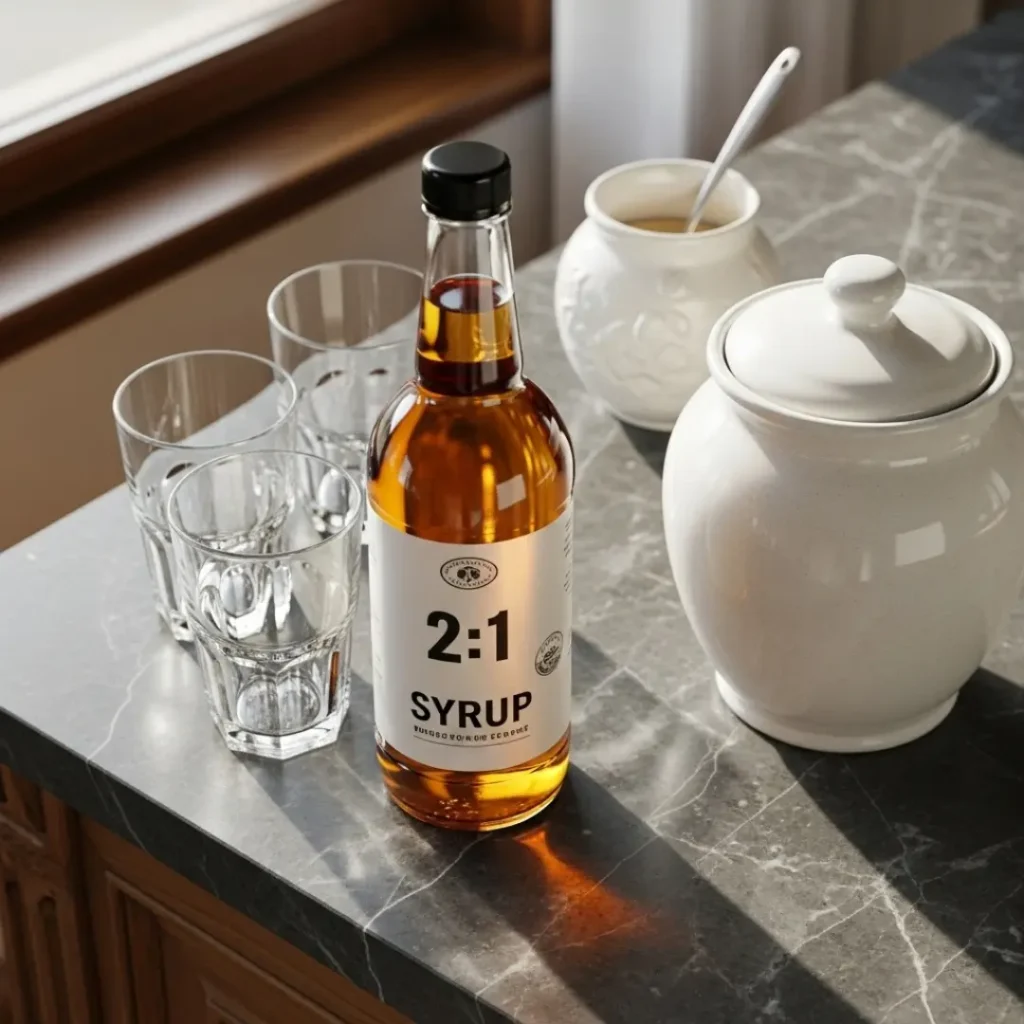
This version is sweeter, more concentrated, and tends to last longer in the fridge. It’s a favorite among bartenders and anyone who likes a little extra punch without extra liquid.
You’ll need a little more stirring to dissolve the extra sugar, but the payoff? A deeper, more luxurious finish in your drinks.
Comparison: 1:1 vs 2:1 Simple Syrup
| Syrup Type | Ratio | Sweetness | Shelf Life | Best For |
|---|---|---|---|---|
| Standard Simple Syrup | 1:1 (equal sugar and water) | Moderate | Up to 1 month (refrigerated) | Iced coffee, lemonade, basic cocktails |
| Rich Simple Syrup | 2:1 (twice the sugar) | High | Up to 6 weeks (refrigerated) | Bold cocktails, longer shelf life, less dilution |
Want a full breakdown of how to choose between 1:1 and 2:1? See our Simple Syrup Ratio Guide.
How to make a fast simple syrup?
Use hot water from a kettle and stir the sugar until fully dissolved. No stovetop needed, and it’s ready in under two minutes!
How to Store Simple Syrup (Fridge Life & Mold Prevention)
Once you’ve made a batch of simple syrup, the next question is: how do you keep it fresh? Because let’s be honest, no one wants to open a jar of syrup only to find little bits floating where they shouldn’t be. (Been there. Not fun.)
How Long Does Simple Syrup Last in the Fridge?
The good news? If stored properly, your homemade syrup can last up to one month in the fridge.
Pour it into a clean, airtight glass jar or bottle—ideally something with a pour spout—and tuck it into the door of your refrigerator. That way it’s always within reach when the craving for an iced chai or blueberry spritzer hits.
If you made the 2:1 rich syrup, you might get closer to six weeks since the extra sugar helps preserve it naturally.
Mold Prevention
Here’s where things can go sideways if you’re not careful. Even though sugar is a preservative, water introduces the risk of mold or fermentation.
A few pro tips:
- Sterilize your container first with hot water or a quick boil.
- Never double-dip a spoon into the syrup. (Trust me—this is how mold parties get started.)
- Add a tiny splash of vodka (if you’re okay with alcohol) to extend shelf life naturally. It won’t affect the flavor in small amounts.
Is simple syrup the same as sour mix?
Nope! Simple syrup is just sugar + water. Sour mix is typically made from lemon/lime juice + simple syrup combined. It’s a whole different flavor profile.
Easy Flavor Variations (Citrus, Mint, Ginger & More)
This is where simple syrup goes from “nice” to “ooh—what’s in this?” With just a few add-ins, you can infuse your syrup with flavors that instantly elevate any drink or dessert. Grandma Dalida used to say, “If you’re already boiling water, why not make it smell like joy?”
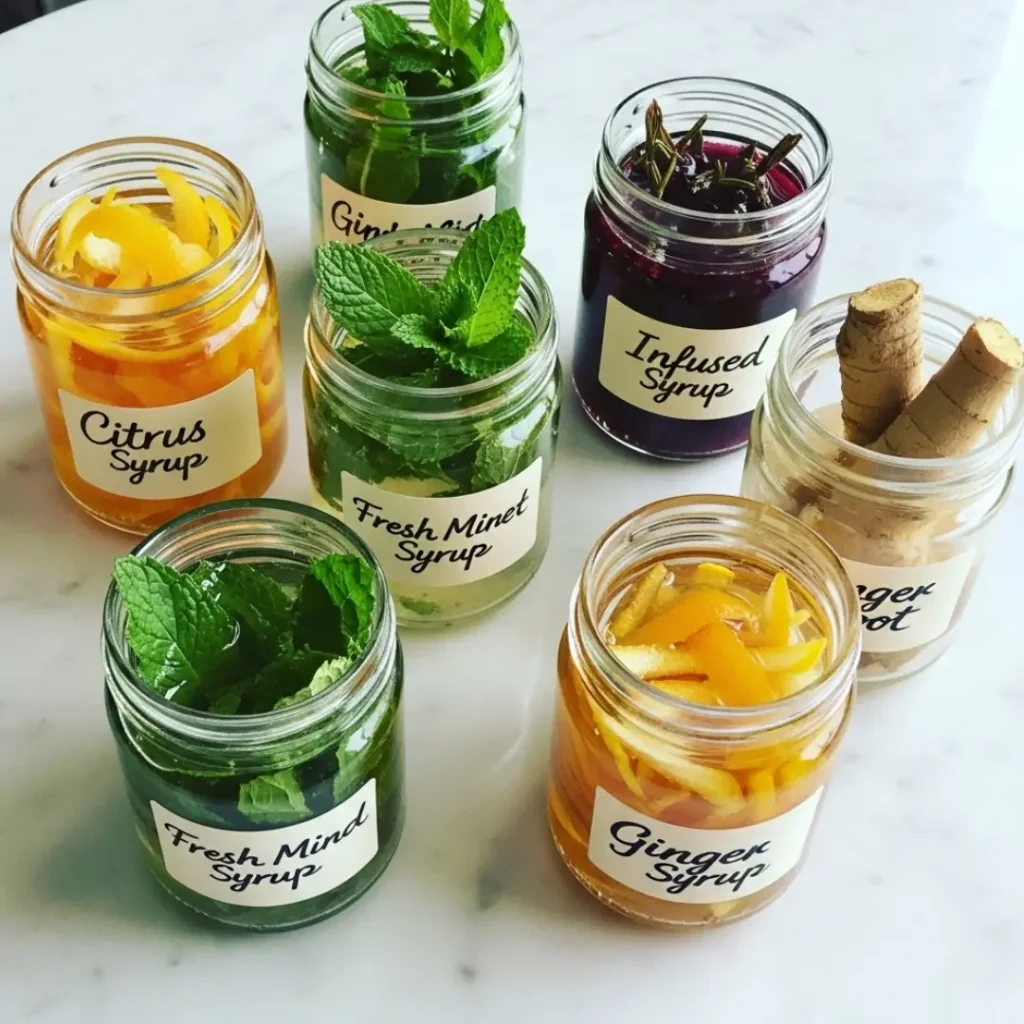
Citrus, Mint, and Ginger
Some of the most comforting syrups start with ingredients you probably already have.
- Lemon or orange peel: Add zest (not the bitter white pith) to your sugar-water mix as it heats. Let it steep off heat for 15–20 minutes for a bright, sunny flavor.
- Fresh mint: Add a generous handful during simmering. It’s perfect for mojitos, iced teas, or even drizzled over fruit salad.
- Ginger: Slice it thin (no need to peel if it’s organic), toss it in, and let that spicy aroma warm your whole kitchen. Ideal for sore-throat tonics or zippy sparkling water mixers.
Just strain everything out before storing—unless you like surprises in your tea.
Tropical Twists (e.g., Blue Curaçao)
Want to go bold? Add color and flair with tropical variations:
- Try mixing in natural blue curaçao syrup for a sweet citrus profile and that unforgettable ocean-blue hue.
- For mocktails or kid-friendly drinks, use a few drops of homemade blue curacao syrup without the alcohol, and serve with a slice of pineapple or mango.
You can explore more about this vibrant syrup in our full Blue Curacao Syrup Guide.
There’s no wrong way to infuse flavor—just start small, trust your senses, and adjust to taste.
Related Syrups to Try: Blue Curaçao, Maple, and Fruit Blends
Once you’ve mastered classic simple syrup, it’s only natural to explore its flavorful variations. These syrups share the same sweet foundation but offer distinctive tastes and creative possibilities.
Blue Curaçao Syrup – Bright Citrus Flavor and Bold Color
Blue Curaçao syrup is a striking, citrus-forward sweetener that adds vibrant color and flavor to both cocktails and mocktails. Often mistaken for its alcoholic counterpart, this version is non-alcoholic and perfect for festive drinks.
- Try it in homemade mocktails or cocktails with this blue curaçao syrup recipe.
- Browse popular blue curaçao drink recipes and mocktails.
- Learn whether it contains alcohol in this detailed guide: Does Blue Curaçao Syrup Have Alcohol?.
- Compare your options in this breakdown: Blue Curaçao vs Triple Sec.
This syrup is ideal for tropical themes, party drinks, or anytime you want to elevate your beverage with citrus and color.
Maple and Fruit Syrups
If you prefer cozy over tropical, maple syrup might be your go-to. It’s perfect for fall cocktails, breakfast bakes, or stirred into oat milk lattes.
And don’t sleep on fruit-based syrups. From strawberry to peach, they’re fantastic for sparkling lemonades, yogurt bowls, or drizzling over pancakes.
Whatever direction you go, simple syrup is your gateway. And once you’re through it, the variations are endless.
🩷 Note from Olivia:
This guide shares my personal tips and kitchen experience with homemade syrups. While I aim to make each step helpful and safe, please remember that all kitchens and needs are different. For health-related concerns, food safety advice, or ingredient allergies, always check with a qualified professional.
Simple Syrup FAQs (Ratios, Substitutes, and Sour Mix Tips)
Can I use sugar substitutes in simple syrup?
Yes—but it’s a bit of a balancing act. Honey and agave nectar work beautifully with a 1:1 swap, though they add their own flavor notes (which can be a good thing!). If you’re going sugar-free, monk fruit and stevia are popular picks—but you’ll need to experiment, since some are sweeter than sugar and behave differently when heated.
If you’re avoiding refined sugar but still want that syrupy texture, try simmering dates or maple syrup into a thicker reduction instead.
What is the formula for simple syrup?
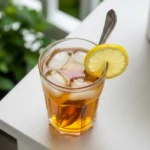
The classic base is simple: 1 part sugar + 1 part water. That’s your go-to for most home recipes and drinks.
If you want something sweeter and longer-lasting, try the rich version: 2 parts sugar to 1 part water.
Should simple syrup be 1:1 or 2:1?
It depends on what you’re using it for.
1:1 is ideal for general home use—sweet teas, lemonades, cocktails.
2:1 is richer, lasts longer, and works great in professional bartending or when you want to use less liquid without sacrificing sweetness.
How to make a fast simple syrup?
Don’t want to break out the stove? Just use hot water from a kettle. Pour it over sugar in a heatproof jar and stir until dissolved. It’s instant, mess-free, and perfect for last-minute drinks.
Is simple syrup the same as sour mix?
Nope—though they’re cousins.
Simple syrup is just sugar and water.
Sour mix includes lemon or lime juice, giving it a tart bite used in margaritas or whiskey sours. Think of sour mix as a sweet-and-sour upgrade to plain syrup.
Final Thoughts: Let’s Sweeten Your Day—The Simple Way
Simple syrup might not be flashy—but it’s one of those little kitchen miracles that makes everything smoother. Whether you’re whisking it into iced coffee, stirring up a citrus mocktail, or infusing it with mint from the garden, you’re creating something that feels intentional. Gentle. Homemade.
If you’ve made it this far, I hope you feel empowered to try a batch (or a twist!) of your own. And if you ever get stuck, remember: start simple. Sugar, water, and a little heart.
💛 Want more cozy recipes and nostalgic kitchen tricks?
Follow me on Facebook for daily ideas straight from my counter to yours:
👉 Golden Era Recipes on Facebook
Warm bowls, vibrant mornings, and healing sips await.
With sweetness from my kitchen to yours,
— Olivia


